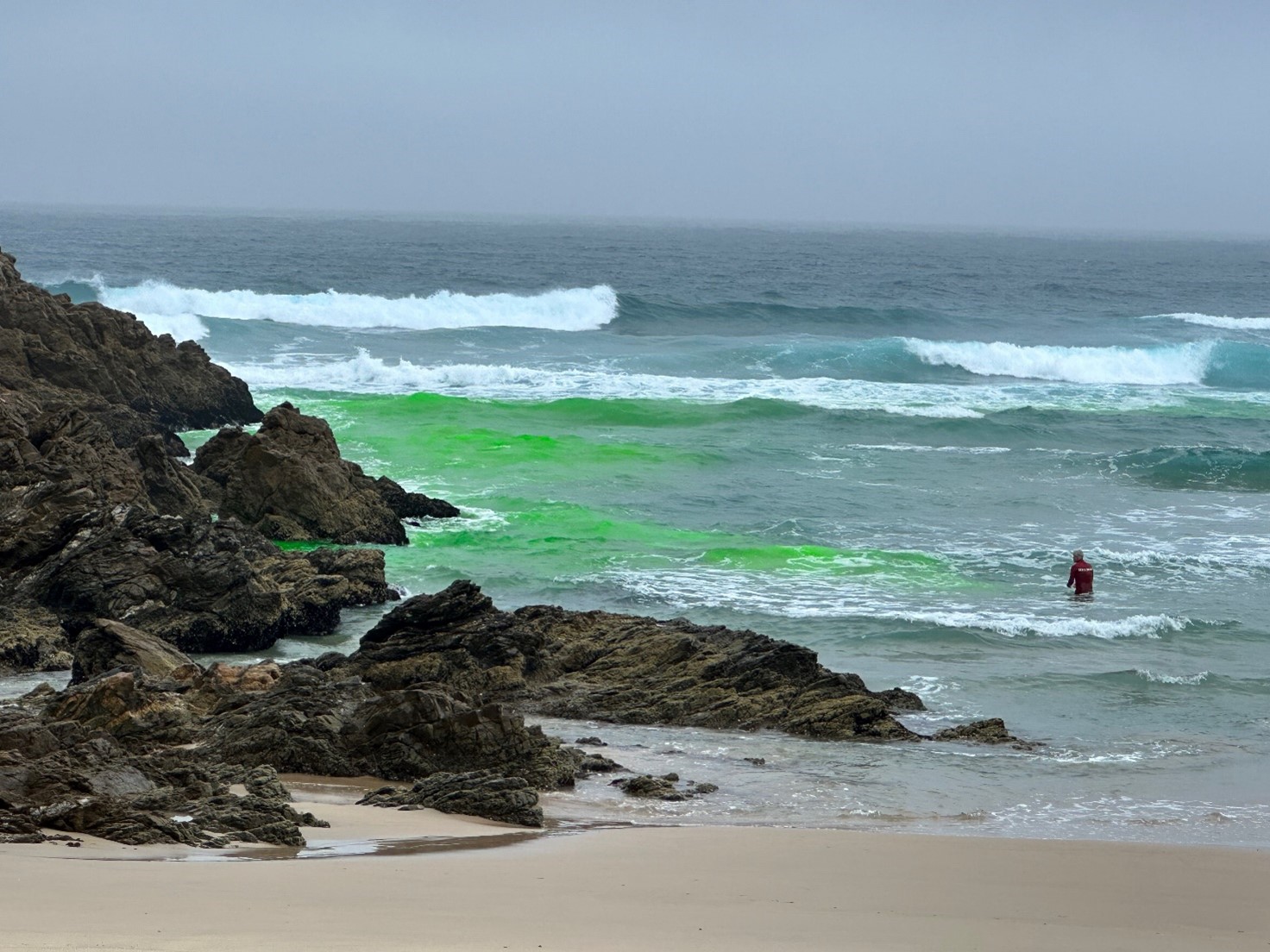Video
GARDEN ROUTE NEWS & VIDEO - With many holidaymakers flocking to the coast for the holiday season, beachgoers are reminded to look out for rip currents.
Recently the National Sea Rescue Institute (NSRI) used a harmless green dye to highlight rip currents at the Herold's Bay and Wilderness beaches.
As rip currents are believed to be the greatest danger that holidaymakers will face when they flock to the beaches this season, the NSRI wants to specifically make people aware of this danger.
"Many people find rip currents hard to see and so we have used fluorescein dye in a once-off deployment to highlight a couple of them so that we could photograph and film the dye being pulled out in the rips," said NSRI's Wilderness Station Commander Mike Vonk.
"We will use these photos and video as educational tools to teach beach safety. Many beaches around South Africa have powerful rip currents which can pull a swimmer away from the beach to behind where the waves form in a couple of minutes.
"A rip current will not pull you under the water, but will pull a swimmer away from the beach."
If you are caught in a rip current, Vonk says, the most important thing is not to panic.
"Swim out of the current at 90 degrees to the direction in which you are being pulled and use the waves to swim back to shore. Or flip on your back and float until the current runs out of strength and you can swim back to the beach," he advised.
VIDEO: Watch more here about the above alert:
How to assist
NSRI drowning prevention manager Andrew Ingram has some important advice on how to assist a person caught in a rip current.
"Call NSRI for help by dialling 112 from your cellphone, save the NSRI's National Emergency Operations Centre number on your phone (087 094 9774) or Google 'Sea Rescue emergency' for the closest NSRI station's number.
"Never go into the water to attempt a rescue without taking something that floats with you," he says.
"Our pink rescue buoys are available on many beaches, as well as some rivers and dams, to be used as emergency flotation for anyone to use to protect themselves while they attempt to help a swimmer in distress. Surfboards or body boards are also good choices to protect yourself and help the person in difficulty if you decide to go into the water to help."
 Photo: Supplied
Photo: Supplied
The pink buoys can save lives and people are asked to take note of where they are placed on beaches.
"They are there for use in an emergency and should be put back after use. If you see that a pink buoy is missing, please call the cell number on the sign and let us know," said Ingram.
The NSRI encourages people to swim at beaches with lifeguards and to swim between the lifeguards' flags. If lifeguards are not on duty, it is safer not to swim.
"Parents are asked to watch their children when they are in or near water and remember that drowning is silent. Please save the emergency numbers on your cellphone before you need it and have a safe holiday," said Vonk.

 Parents are asked to watch their children when they are in or near water and remember that drowning is silent.
Parents are asked to watch their children when they are in or near water and remember that drowning is silent.
'We bring you the latest Garden Route news'
















